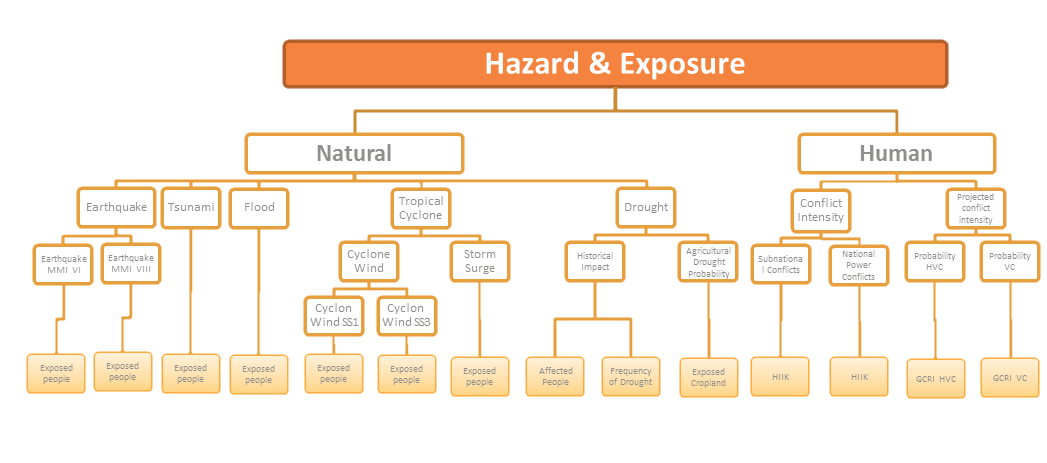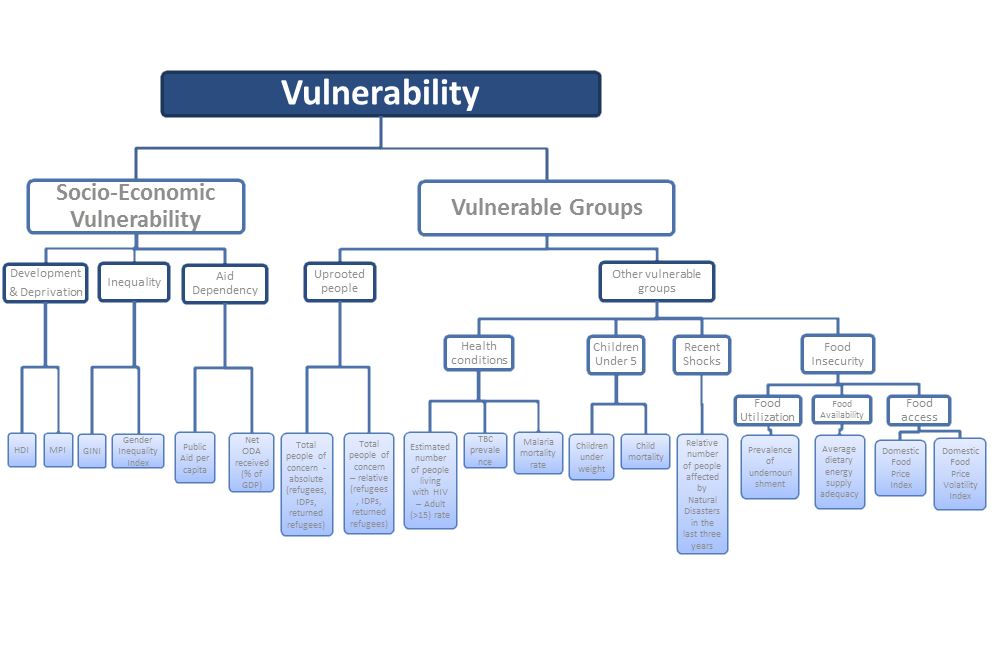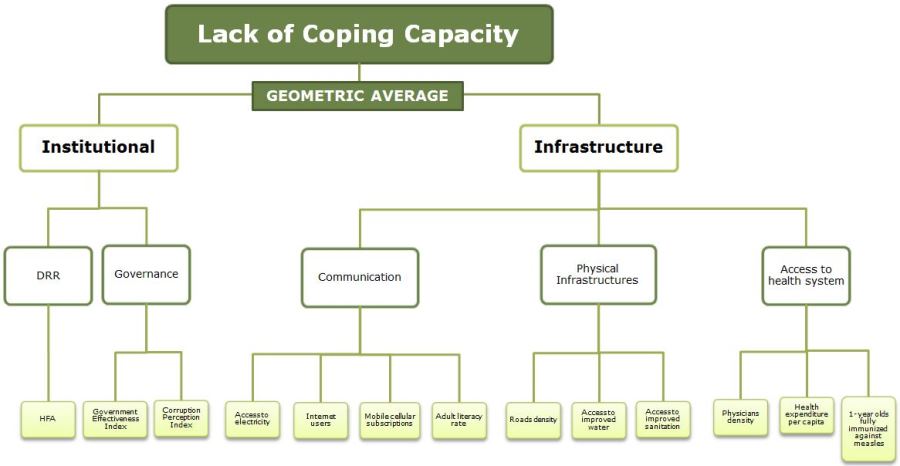|
The theoretical framework provides the basis for component selection, which is the next crucial step in the design of the composite index. The components should be:
- relevant: justification based on the existing literature,
- representative and robust: focused on the component to be described, proportionally responsive to the changes, they should avoid broad measures ( e.g., GDP/capita),
- transparent and conceptually clear.
Furthermore, strengths and weaknesses of the composite index also derive from the core indicators, i.e. data sets describing the chosen component. These should be:
- reliable and open-source,
- continuous, consistent, with global coverage,
- potentially scalable from national to subnational, from yearly to seasonal (monthly) scale.
A composite index is typically a compromise between a data driven and a user driven model. There are always some components which existing data cannot describe, especially if the demands for quality of data are very high.
Hazard & Exposure
The hazard & exposure dimension reflects the probability of physical exposure associated with specific hazards. There is no risk if there is no physical exposure, no matter how severe the hazard event is. Therefore, the hazard and exposure dimensions are merged into hazard & exposure dimension. As such it represents the load that the community has to deal with when exposed to a hazard event. The dimension comprises two categories: natural hazards and human-induced hazards, aggregated with the geometric mean, where both indexes carry equal weight within the dimension.

Vulnerability
The main focus of humanitarian organizations is people, which is the element at risk contemplated in the INFORM composite index. The impact of disasters on people in terms of number of people killed, injured, and made homeless is predominantly felt in developing countries while the economic costs of disasters are concentrated in the industrialized world. The Vulnerability dimension addresses the intrinsic predispositions of an exposed population to be affected, or to be susceptible to the damaging effects of a hazard, even though the assessment is made through hazard independent indicators. So, the vulnerability dimension represents economic, political and social characteristics of the community that can be destabilized in case of a hazard event. Physical vulnerability, which is a hazard dependent characteristic, is dealt with separately in the hazard & exposure dimension.
There are two categories aggregated through the geometric average, socio-economic vulnerability and vulnerable groups. The indicators used in each category are different in time variability and the social groups considered in each category are the target of different humanitarian organizations. If the first category refers more to the demography of a country in general, the vulnerable group category captures social groups with limited access to social and health care systems.

Lack of Coping Capacity
For the coping capacity dimension, the question is which issues the government has addressed to increase the resilience of the society and how successful their implementation is. The coping capacity dimension measures the ability of a country to cope with disasters in terms of formal, organized activities and the effort of the country’s government as well as the existing infrastructure which contribute to the reduction of disaster risk. It is aggregated by a geometric mean of two categories: institutional and infrastructure. The difference between the categories is in the stages of the disaster management cycle that they are focusing on. If the institutional category covers the existence of DRR programmes which address mostly mitigation and preparedness/early warning phase, then the infrastructure category measures the capacity for emergency response and recovery.

|